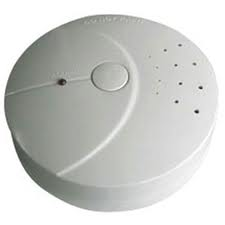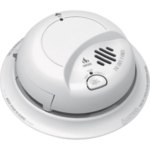CO DETECTOR REQUIREMENT UPDATE
The State of Wisconsin has modified the Carbon Monoxide (CO) Detector laws. The following is a summary of the enacted changes. The full version may be found HERE.
This new law affects buildings with natural fuel burning appliances, including fireplaces.
 Buildings that have all electric appliances are exempt unless there is an attached garage.
Buildings that have all electric appliances are exempt unless there is an attached garage.
Buildings with all sealed combustion units are exempt, providing the appliance is under manufacturer’s warranty, unless there is an attached garage.
Although there are exceptions to the law, it is our recommendation that CO Detectors be installed based on the information below.
SINGLE AND TWO FAMILY DWELLINGS
- New Construction requires hard wired installation with battery back up
- Existing Buildings may utilize battery powered detectors
- Within 15 feet of each sleeping area
- On each level of the dwelling
The installed CO Detector must bear and Underwriters Laboratory (UL) seal.
MULTIFAMILY DWELLINGS
(Apartments with 3 units or greater, hotels, motels, Bed & Breakfast's, rooming houses or dorms)
New Construction requires hard wired installation with battery back up
- Existing Buildings may utilize battery powered detectors
- Detector required in the basement of the building if the basement has a fuel-burning appliance
- Within 15 feet of each sleeping area of a unit that has a fuel-burning appliance
- Within 15 feet of each sleeping area of a unit that is immediately adjacent to a unit that has a fuel-burning appliance
- In each room that has a fuel-burning appliance and that is not used as a sleeping area but not more than 75 feet from the fuel-burning appliance
- In each hallway leading from a unit that has a fuel-burning appliance, in a location that is within 75 feet from the unit. If there is no electrical outlet within this distance, the owner shall place the carbon monoxide detector at the closest available electrical outlet in the hallway
 If a unit is not part of a multiunit building, the owner of the residential building need not install more than one carbon monoxide detector in the unit
If a unit is not part of a multiunit building, the owner of the residential building need not install more than one carbon monoxide detector in the unit- The owner shall install every carbon monoxide detector required by this subsection according to the directions and specifications of the manufacturer of the carbon monoxide detector
- The owner of a residential building shall reasonably maintain every carbon monoxide detector in the residential building in the manner specified in the instructions for the carbon monoxide detector
- An occupant of a unit in a residential building may give the owner of the residential building written notice that a carbon monoxide detector in the residential building is not functional or has been removed by a person other than the occupant. The owner of the residential building shall repair or replace the non-functional or missing carbon monoxide detector within 5 days after receipt of the noticeNew Construction requires hard wired installation with battery back up
- Existing Buildings may utilize battery powered detectors
The installed CO Detector must bear and Underwriters Laboratory (UL) seal.
COMMERCIAL DWELLINGS
The requirements for this classification of occupancy are the same as multifamily dwellings provided they have area designated for sleeping within the building or are abutted by a unit which does.
